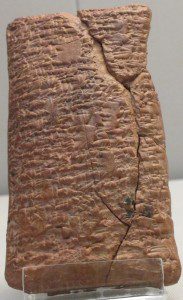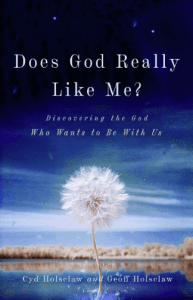 Human language.
Human language.
However many other aspects of human nature and behavior we find among animals on earth, human capacity for language remains unique. The capacity for language and the capacity for abstract thought are intimately connected. We communicate complex ideas to each other through the medium of language. We even internalize and consider abstract concepts through the medium of language. This is an intimate part of who we are as a species, as a people. Language places boundaries on the way we think, but these are soft boundaries. We can break away from what we know and move into uncharted territories.
Even here, language plays an important role. To communicate new thoughts we often develop analogies and use metaphors connecting things we already know (or think we know) to these new and unfamiliar ideas. It is hard to imagine making progress in any other way. As a physical chemist I will describe the quantum nature of matter using concepts that are familiar – waves and particles. But electrons and photons are neither waves nor particles. As inherently quantum mechanical entities they behave wave-like or particle-like under certain circumstances.
When we read Genesis we read a story of divine origin told through the medium of human language, for human understanding. We believe as Christians that there is a divine source for the story. But the story must use concepts familiar to the original audience to communicate the important new ideas. This is how human language and thinking works. There is no way an ancient audience could really have made a leap from their world to our present day understanding of cosmology and particle physics. It would just have muddied the waters.
Human language is powerful, but can also be deceptive. Two recent posts on the BioLogos site (link: here) discuss helpful and unhelpful metaphors for evolution. Their introduction: “Evolution is a complex scientific theory that can be hard to wrap the mind around. To help us grasp evolution, we sometime employ metaphors; powerful conceptual tools that help us understand new concepts by connecting them to ideas we are familiar with. However just as the right metaphor can go a long way in guiding our learning, so the wrong metaphor can be dangerously misleading.“
Andy Walsh starts by providing four unhelpful metaphors. He starts:
Metaphors can be powerful teaching tools, leading us to an understanding of new concepts by connecting them to ideas we have already grasped. As with any tool, choosing the right one is important. A metaphor that builds on a familiar, evocative image but fails to capture essential details of the new concept can give a false impression of learning. It’s like using a wrench that’s too big. You turn and turn and feel like you are doing work, but at the other end nothing happens because the wrench hasn’t engaged.
The four unhelpful metaphors he highlights are: (1) Tornado in a junkyard, (2) monkeys banging out Shakespeare on a typewriter, (3) evolving car models, and (4) king of the hill. Evolution doesn’t happen all at once, like a tornado. It isn’t completely random like the monkeys (changes over time build on each other). In evolution there are organic connections between modifications – which is not always true with automobiles. Survival of the fittest is not the only operating feature in evolution. I personally find the image of “red in tooth and claw” to be terribly misleading. While evolution does involve death, it is only as bloody as the world around us today. We have predators and prey, yes. But evolutionary change is slow and imperceptible to any individual in the process as they live out their lives.
Four (or five) helpful metaphors: Family tree, language, magnetic stick and ball toys, sowing seed, and machine learning. A family tree displays connectedness and allows for multiple family branches. Language changes slowly over time. Dennis Venema used this example in Adam and the Genome to communicate important ideas in evolution. Magnetic stick and ball toys can self assemble into larger structures. Scattered seed can thrive in the right kind of soil. Machine learning, where algorithms allow an object to adapt based on input, help us think about evolution (although many were inspired by evolutionary processes in the first place).
 We’d never make sense of the world if we didn’t use metaphors and analogies to move from what we already know into the unknown. Andy Walsh concludes:
We’d never make sense of the world if we didn’t use metaphors and analogies to move from what we already know into the unknown. Andy Walsh concludes:
As we learn new ideas via science, we can also use them as metaphors to understand other challenging subjects. Jesus used that approach in many of his parables, for example. He took what the people understood about creation and used it to teach them more about the Creator. I’m curious whether we can use contemporary science in the same fashion.
He also mentions a book he has coming out this summer – Faith Across the Multiverse: Parables from Modern Science. It looks to be another good opportunity to dig into some interesting ideas. Read his posts at BioLogos. I’ve only scratches the surface here.
How do we communicate ideas?
What might this mean when we consider science and Christian faith?
If you wish to contact me directly you may do so at rjs4mail [at] att.net.
If interested you can subscribe to a full text feed of my posts at Musings on Science and Theology.











